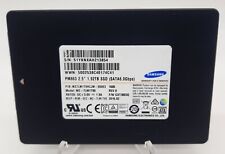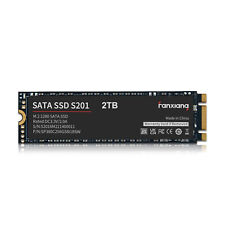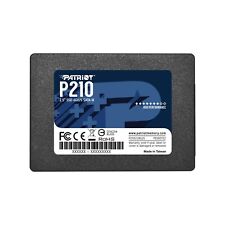-
Senior Member
registered user
I think the claim that cloop needs at least I G memory is likely to be over-stated. A quick check on cloop source code revealed that it also decompresses the file system on-the-fly basis.
The 1G of /ramdisk mounted, used when one does not have persistent store, is something which the actual usage will grow as it is used. The 1G /ramdisk is mounted, but not used when there is a persistent store. And therefore even though that's a "bug", it does no harm.
In terms of CPU cycles, there is no apparent difference between squashfs and cloop, because both uses the same "on-the-fly" decompression and buffered blocked strategies, and also same compression algorithm.
Therefore the only different between squashfs and cloop is that squashfs has long been accepted into the kernel, it needs no extra maintenance. Cloop is currently maintained separatelly by the author of KNOPPIX.
-

Originally Posted by
kl522

I think the claim that cloop needs at least I G memory is likely to be over-stated. A quick check on cloop source code revealed that it also decompresses the file system on-the-fly basis.
The 1G of /ramdisk mounted, used when one does not have persistent store, is something which the actual usage will grow as it is used. The 1G /ramdisk is mounted, but not used when there is a persistent store. And therefore even though that's a "bug", it does no harm.
In terms of CPU cycles, there is no apparent difference between squashfs and cloop, because both uses the same "on-the-fly" decompression and buffered blocked strategies, and also same compression algorithm.
Therefore the only different between squashfs and cloop is that squashfs has long been accepted into the kernel, it needs no extra maintenance. Cloop is currently maintained separatelly by the author of KNOPPIX.
I don't think Klaus would have become the maintainer of cloop for anything less than a substantial reason; too much work for no real benefit. I don't know what that reason is, but I know it must exist. The "phantom GB of ramdisk" aspect of cloop is probably intentional, perhaps to make possible very fast growth of the actual filesystem, or some such. Regardless of all that, if one had some reason to avoid using the compressed filesystems (perhaps speed?), how difficult would it be to leave that out in a re-master? Just curious, and I thought one of y'all might have the answer.
Cheers!
Krishna 
-
Senior Member
registered user

Originally Posted by
krishna.murphy

I don't think Klaus would have become the maintainer of cloop for anything less than a substantial reason; too much work for no real benefit. I don't know what that reason is, but I know it must exist.
That's what we call "belief", it's not based on facts. 
I think it's all historical. Cloop existed long time ago. Klaus is not the creator. He is just the maintainer. He needed it at that moment. So now nobody else except him has "vested" interest in it. He is using it simply because he is familiar with it. Kind of sentimental value thingie. As a matter of fact, it's a easy swap to use squashfs.
The "phantom GB of ramdisk" aspect of cloop is probably intentional, perhaps to make possible very fast growth of the actual filesystem, or some such.
I believe that you said this because you did not look at the code. The ram disk has nothing to do with cloop. The ram disk is created for unionsfs with cloop, to allow users to have write access to the otherwise read-only cloop. And it's left mounted unused when the user has a persistent store. If you look at the code you will agree with me, it's a bug.
 Posting Permissions
Posting Permissions
- You may not post new threads
- You may not post replies
- You may not post attachments
- You may not edit your posts
-
Forum Rules


Fanxiang 4TB 2TB 1TB SSD 550MB/s 2.5'' SATA III Internal Solid State Drive lot
$188.99

1.92TB SSD SATA 2.5 SAMSUNG MZ-7LM1T90 PM863 MZ7LM1T9HCJM Tested 93%+
$45.73

Netac 2TB 1TB 512GB 240GB Internal SSD 2.5'' SATAIII 6Gb/s Solid State Drive lot
$118.99

Fanxiang M.2 SATA SSD 2TB 1TB 512GB 256GB SSD Internal M2 Solid State Drive Lot
$109.99

Patriot P210 128GB 256GB 512GB 1TB 2TB 2.5" SATA 3 6GB/s Internal SSD PC/MAC Lot
$13.99

Crucial M500 480GB SED MLC 2.5" 6Gbps SATA Drive CT480M500SSD1 - PRICE PER UNIT
$24.99

Genuine Samsung 850 EVO MZ-75E250 250GB 2.5" SATA III SSD Solid State Drive
$20.00

Fanxiang 256GB SSD 2.5'' SATA SSD III 6Gb/s 530MBs Internal Solid State Drive PC
$19.99

Netac 1TB 2TB 512GB 120GB Red Internal SSD 2.5'' SATA III Solid State Drive lot
$118.99

512GB 1TB 2tb 4tb 256g M.2 2280 SSD SATA3 Internal Solid State Drive Lot Dogfish
$271.99



 Reply With Quote
Reply With Quote











